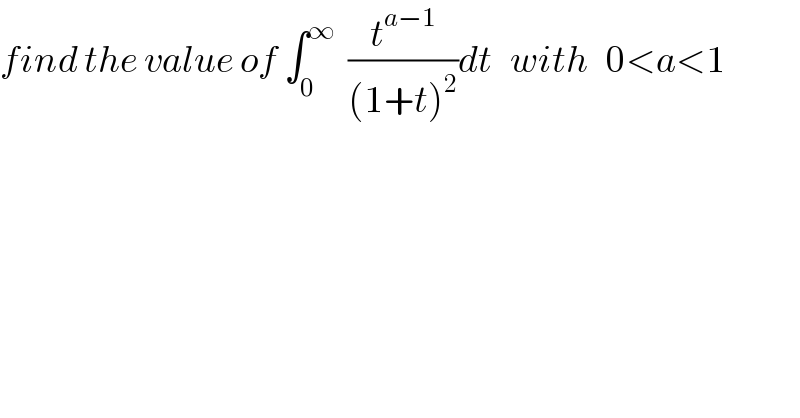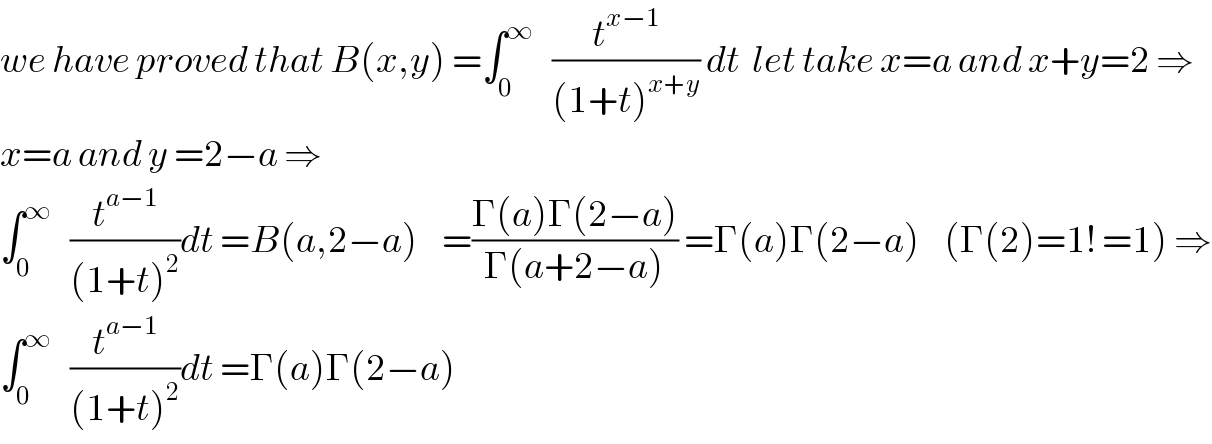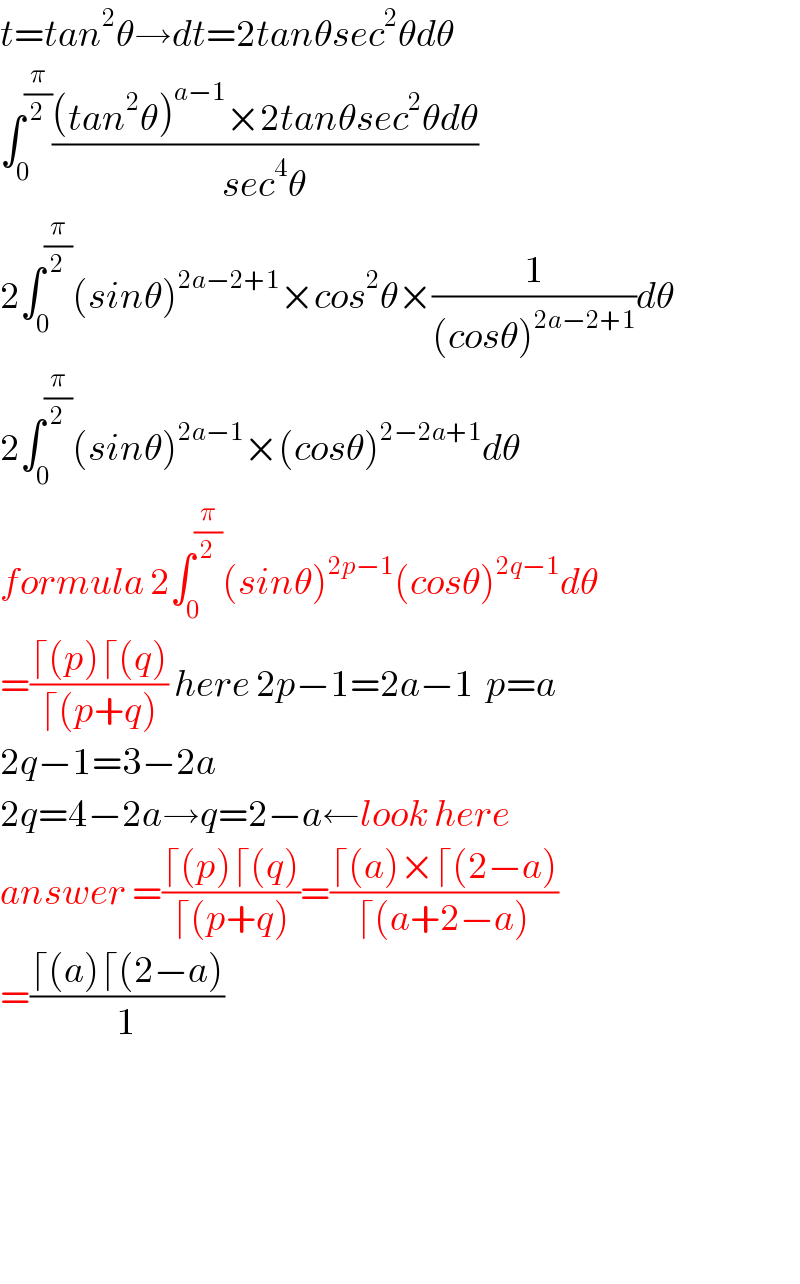
Question and Answers Forum
Question Number 62330 by maxmathsup by imad last updated on 19/Jun/19

Commented bymathmax by abdo last updated on 04/Jul/19

Answered by tanmay last updated on 19/Jun/19

| ||
Question and Answers Forum | ||
Question Number 62330 by maxmathsup by imad last updated on 19/Jun/19 | ||
 | ||
Commented bymathmax by abdo last updated on 04/Jul/19 | ||
 | ||
Answered by tanmay last updated on 19/Jun/19 | ||
 | ||
| ||